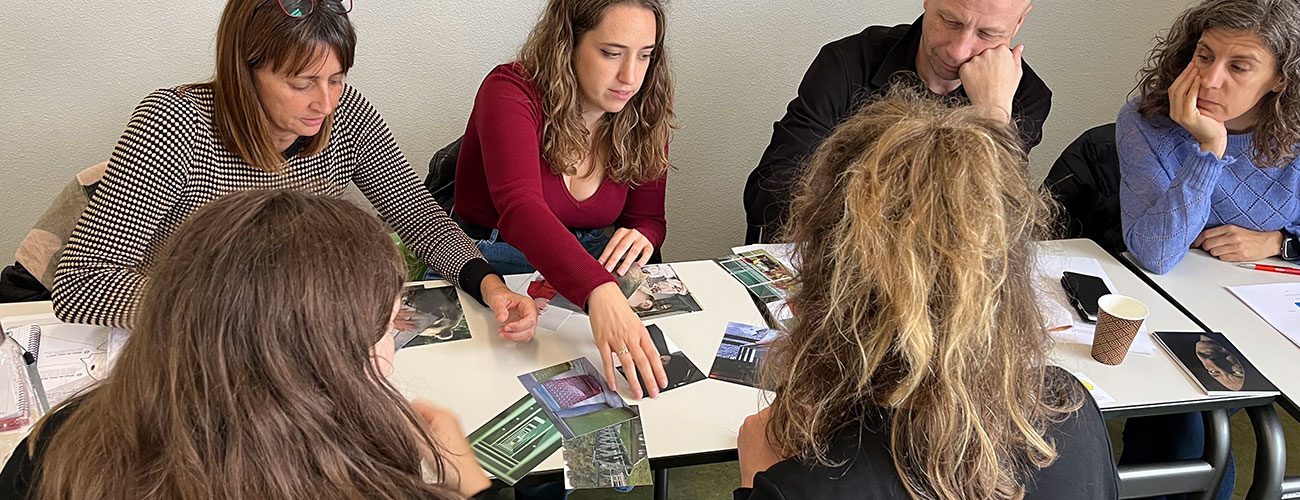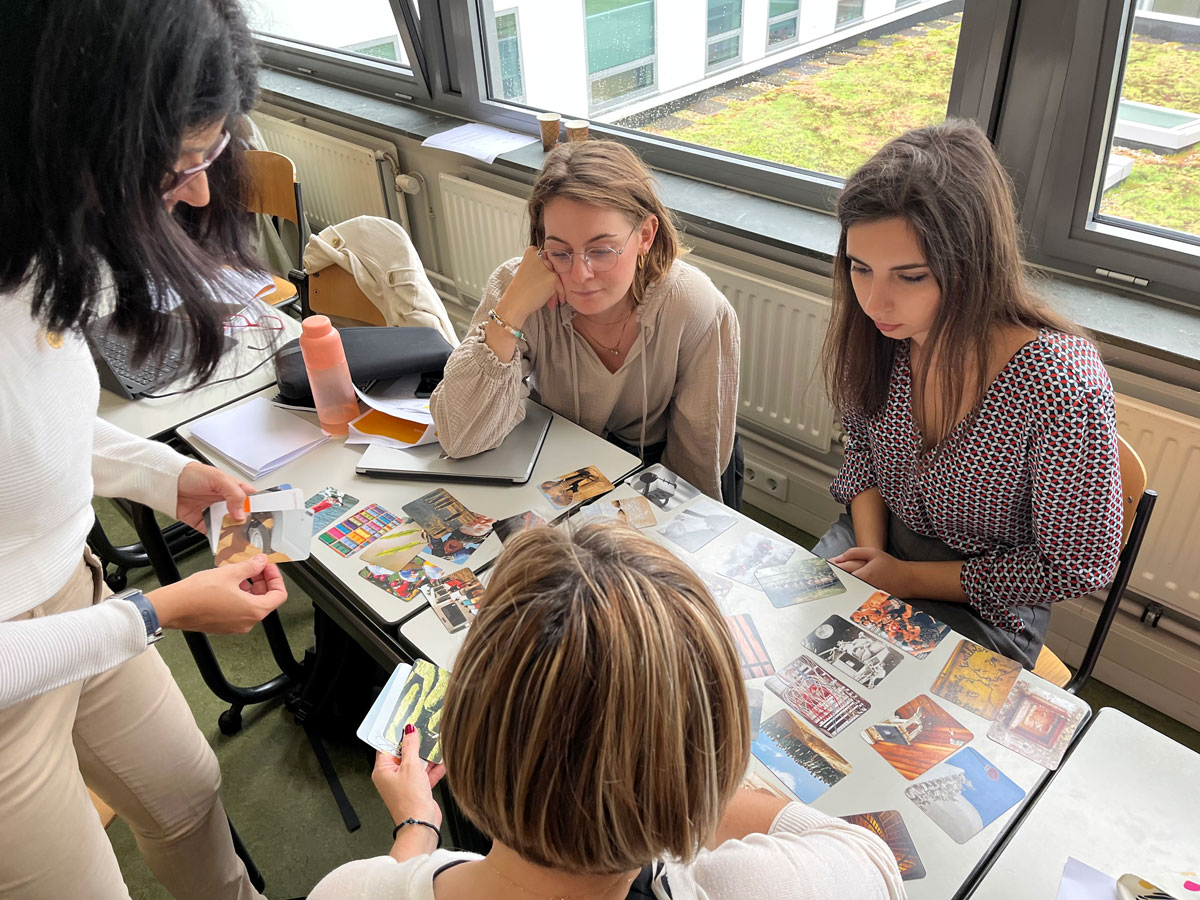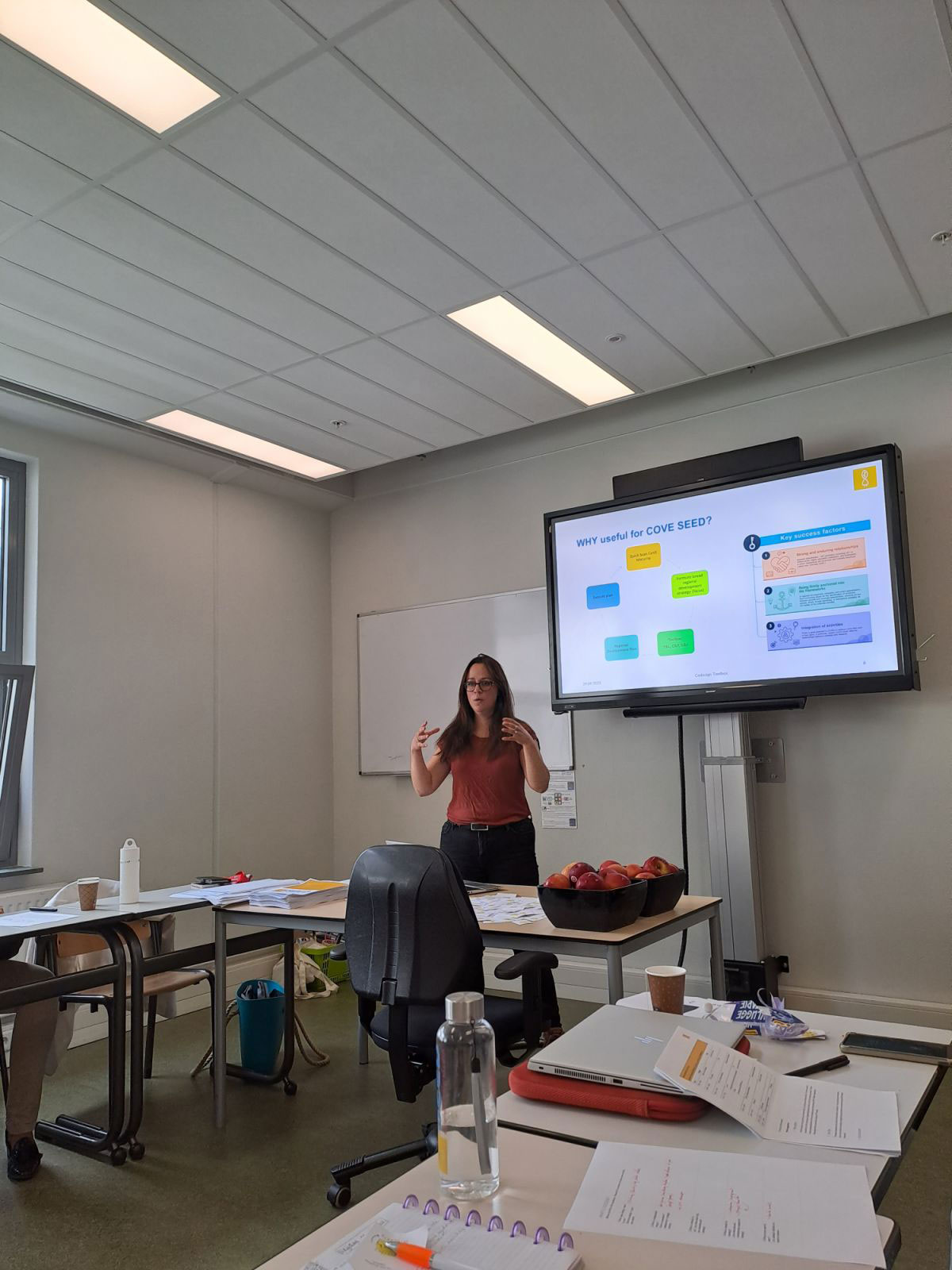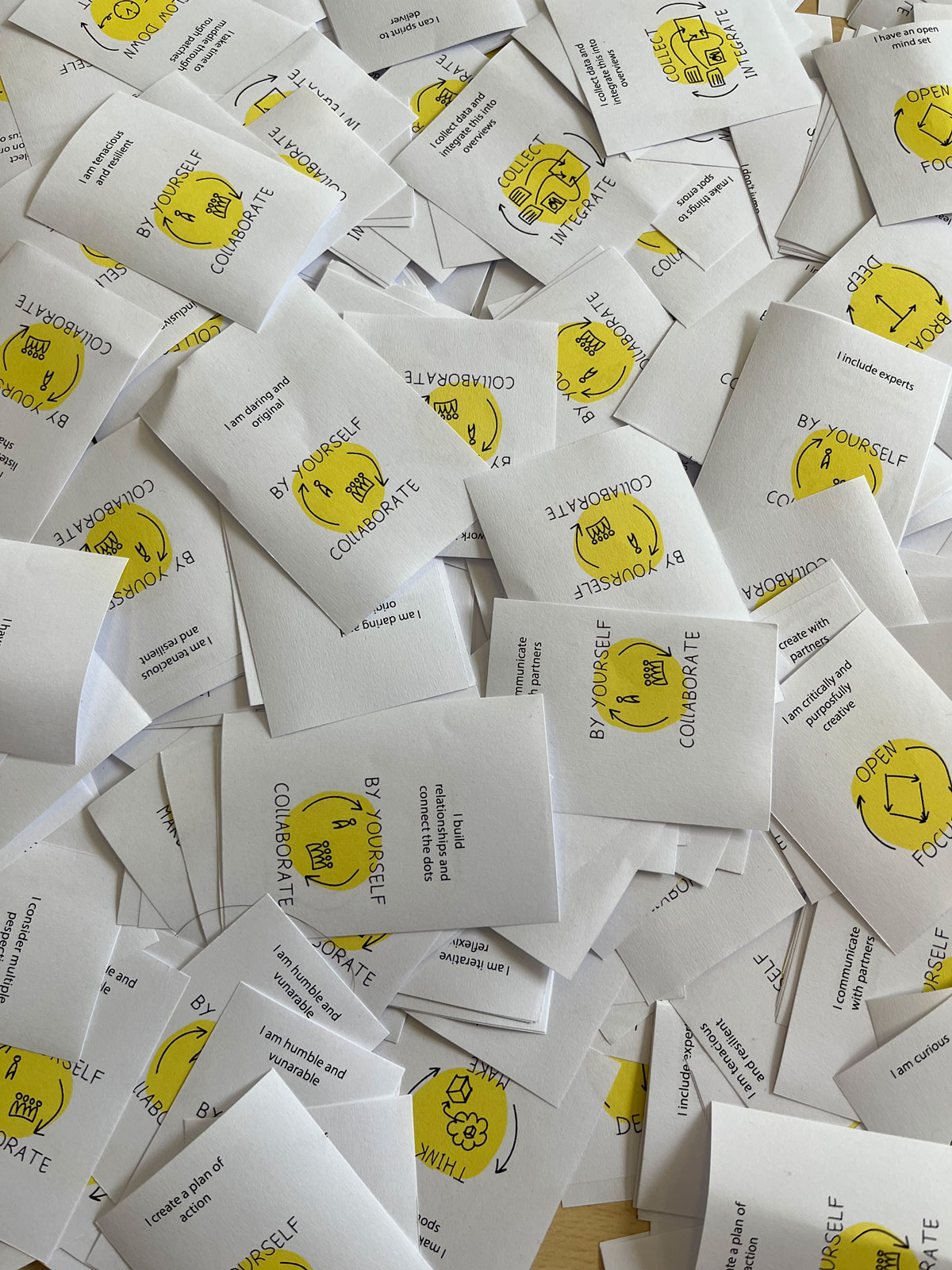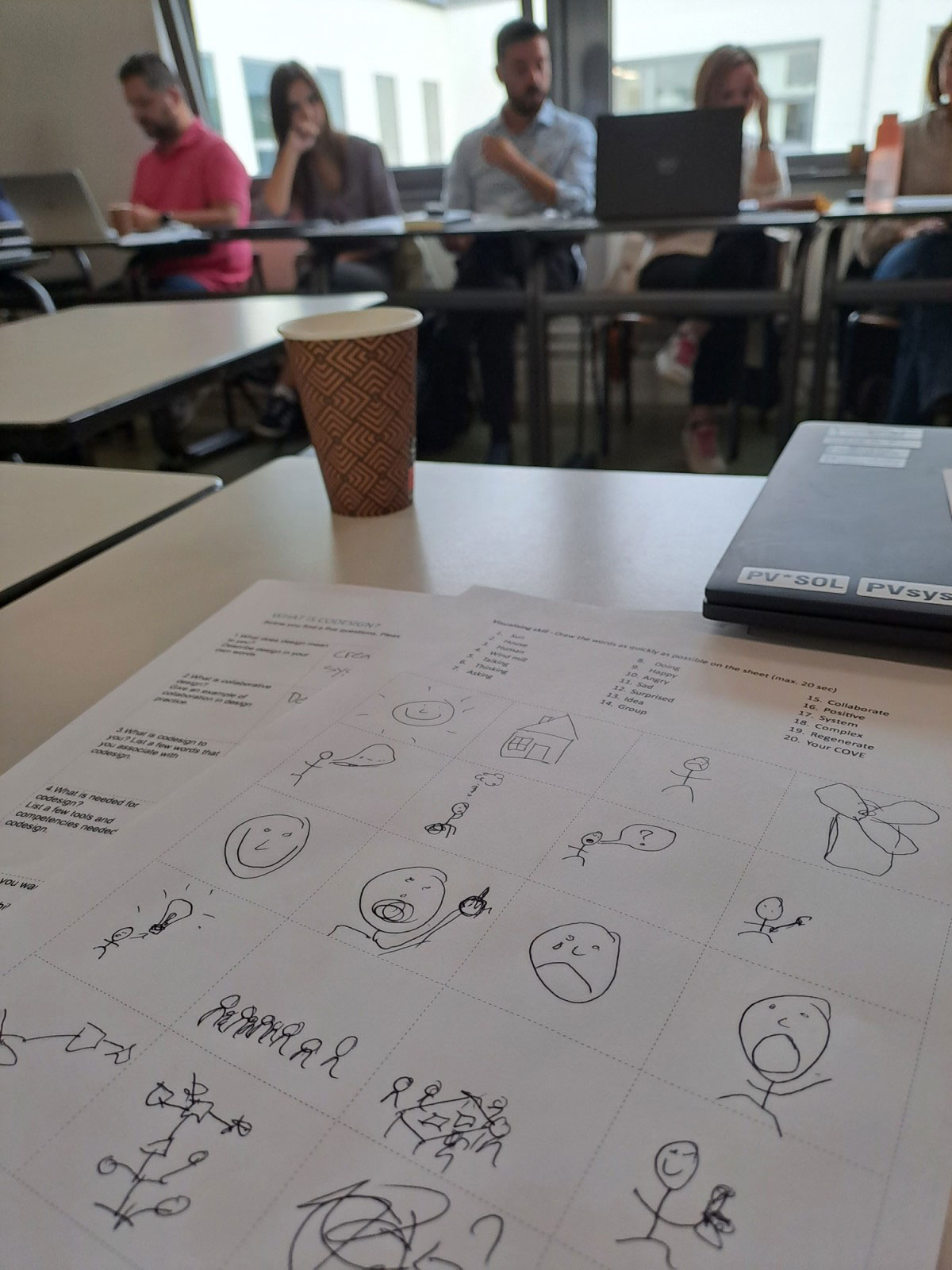During the meeting in Utrecht, SEED’s partners had the opportunity to learn about various co-design techniques, engage in discussions about them, and practice their application. This workshop enabled them to gain a deeper understanding of the benefits of collaborative design and expand their skill set, which will be essential as they proceed with co-designing the regional CoVE strategy alongside all the members of each regional CoVE.
What are your codesign abilities? That was the first question of the workshop. The project partners picked their cards and shared their ways of working. This was followed by a short introduction on codesign abilities and principles.
During the workshop partners discussed the difference between codesign and other terms, like design thinking and collaborative design. The partners concluded that in codesign people work together on a shared design goal using codesign methods and principles. In addition to working collaboratively, codesign partners involve different stakeholders more intensively in their ways of working and work towards a common goal. In the previous workshop they have identified different stakeholders involved in the COVE SEED regions, for example, partners from other institutions, energy partners, students, lecturers, policymakers, and citizens.
In the workshop, they explored codesign principles, design thinking methods and codesign approaches. They explored how to frame a project goal and problem definition. It is important to work on the right problem. Sometimes there is a problem behind the problem. One group discussed although they have strong ties with the energy sector, but it is still difficult to develop curricula that match with the requirements of the energy sector. The problem behind this problem is that in the Netherlands, the energy sector is subject to quick changes in policies and fierce competition. The VET-institutions could codesign modular education with the energy sector to be able to adapt quickly to these changes. Another group noted that in Spain, VET institutions have traditional education. The problem behind this is the VET-institutions are not collaborating with the energy sector. Codesign methods can be used connect VET-institutions with the energy sector.
The project partners are now equipped with a codesign toolbox they can use to develop strategies and ways of working in the different COVE regions. Next time we meet, we will exchange experiences codesigning with partners and stakeholders.

